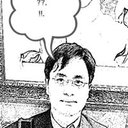Antiphotoaging and Antimelanogenic Effects of Penthorum chinense Pursh Ethanol Extract due to Antioxidant- and Autophagy-Inducing Properties.
Keywords
Abstract
Ethnopharmacological Relevance. Penthorum chinense Pursh (Penthoraceae) is a traditional herbal plant that has been used in China for the treatment of jaundice, cholecystitis, edema, and infectious hepatitis. In addition, the Korea Medicinal Plant Dictionary states that Penthorum chinense Pursh can be used to treat contusions and skin bruises by improving blood flow. Recent studies have shown that Penthorum chinense Pursh ethanol extract (Pc-EE) exhibits strong antioxidant effects. In this study, we examined the effects of Pc-EE on UVB-induced or H2O2-induced oxidative stress, as well as its antimelanogenic properties. Cell viability, matrix metalloproteinase (MMP) expression, cyclooxygenease-2 (COX-2), and interleukin-6 (IL-6) expression and moisturizing factors were investigated in keratinocytes. Collagen synthesis induction was measured in HEK293T cells. For melanogenesis, the effects of Pc-EE on melanin content and tyrosinase activity were measured. Additionally, the antimelanogenic- and autophagy-inducing activities of Pc-EE were examined using immunoblotting and confocal microscopy. Pc-EE protected HaCaT cells against death from UVB irradiation- or H2O2-induced oxidative stress. Pc-EE increased the promoter activity of the type 1 procollagen gene Col1A1 and decreased the expression of MMPs, COX-2, IL-6, and hyaluronidase induced by UVB irradiation- or H2O2-induced oxidative stress. Pc-EE showed a strong antioxidant effect in the DPPH assay. In α-melanocyte-stimulating hormone- (α-MSH-) stimulated B16F10 cells, Pc-EE reduced melanin production, decreased tyrosinase expression and microphthalmia-associated transcription factor (MITF) protein levels, and decreased the phosphorylation levels of p38 and JNK. In HEK293T cells, Pc-EE promoted the expression of GFP-LC3B. In B16F10 cells, the LC3B and melanin contents were reduced by Pc-EE and were restored by the autophagy inhibitor 3-methyladenine (3-MA). These results suggest that Pc-EE can be used as a skin protection agent due to its antiapoptotic, antiaging, anti-inflammatory, and antimelanogenic properties.



